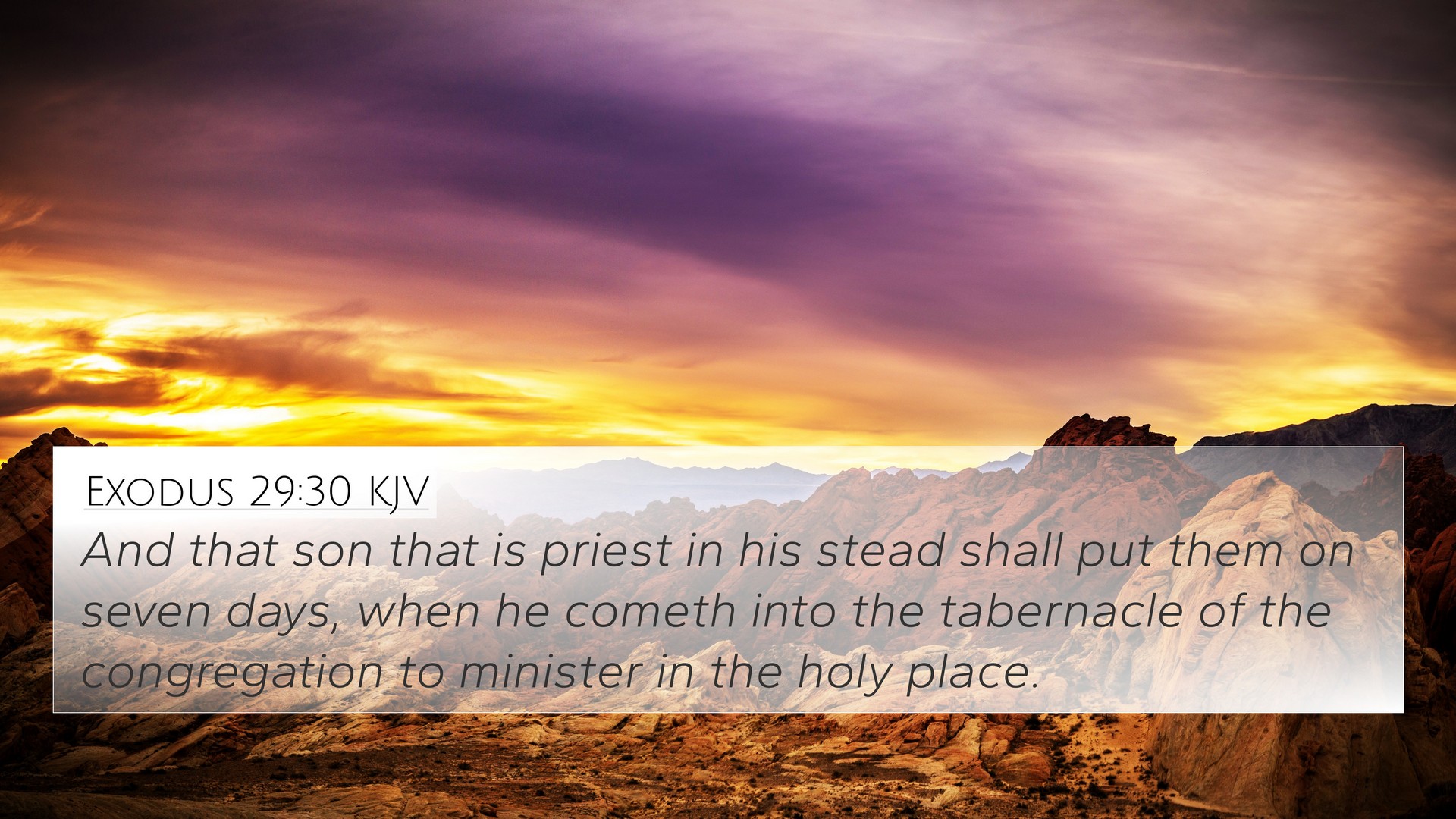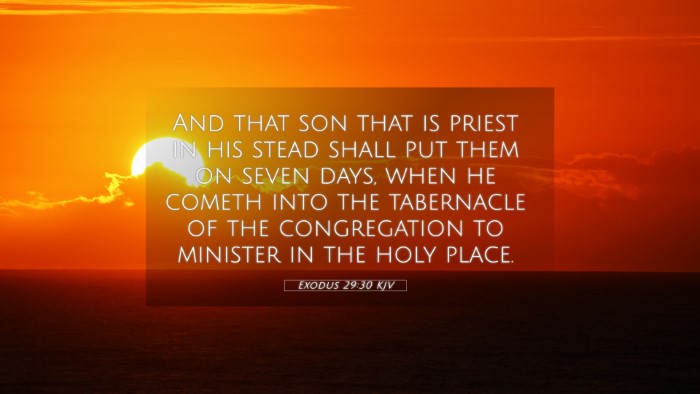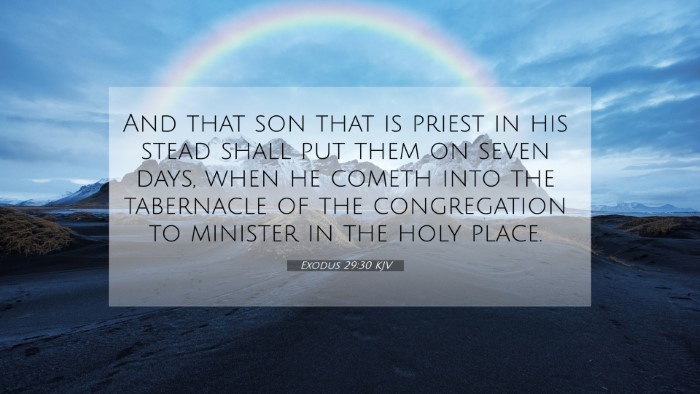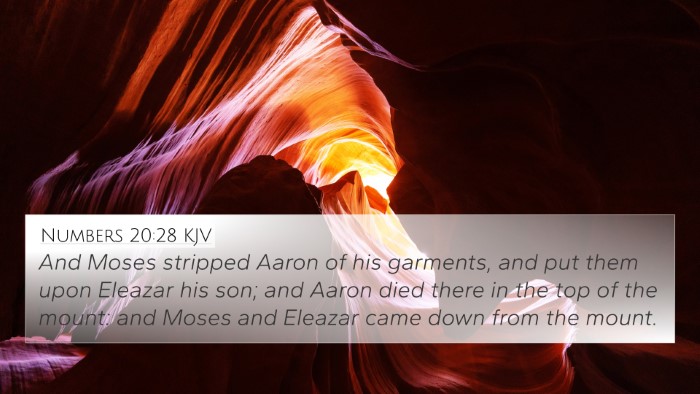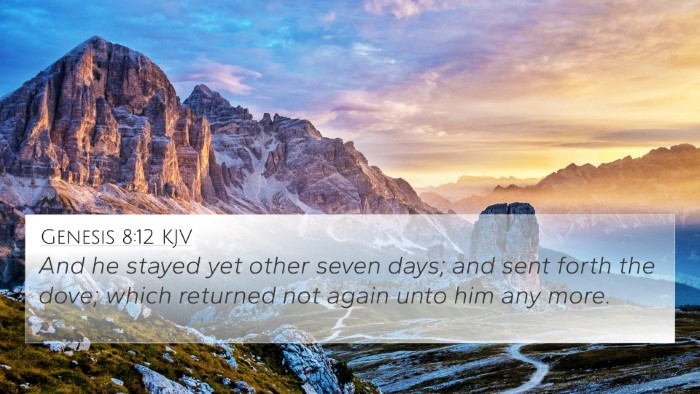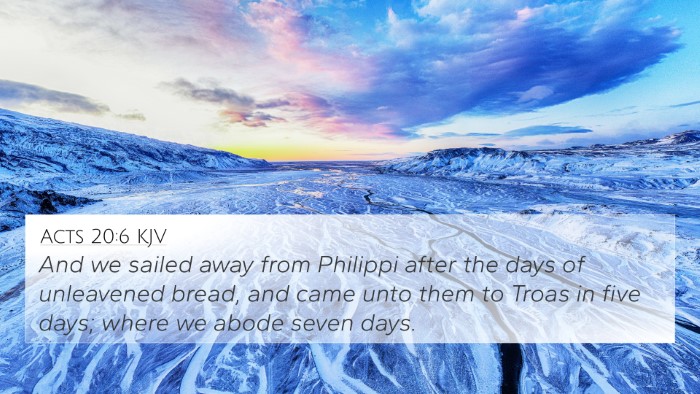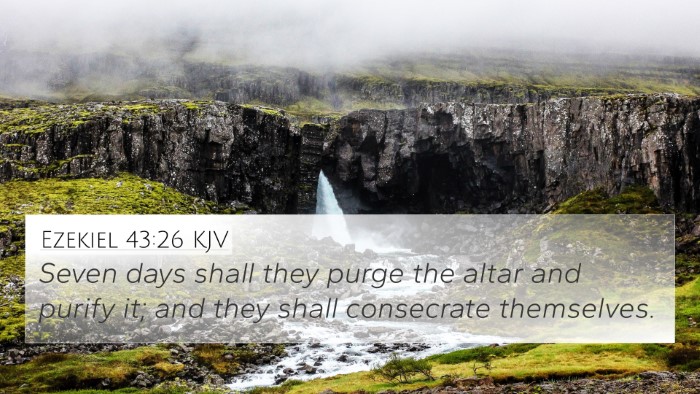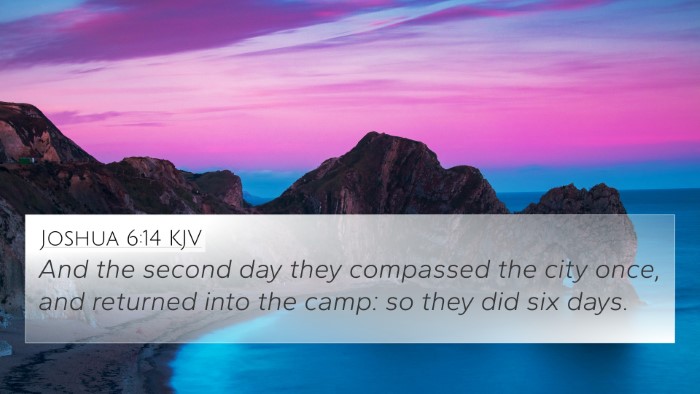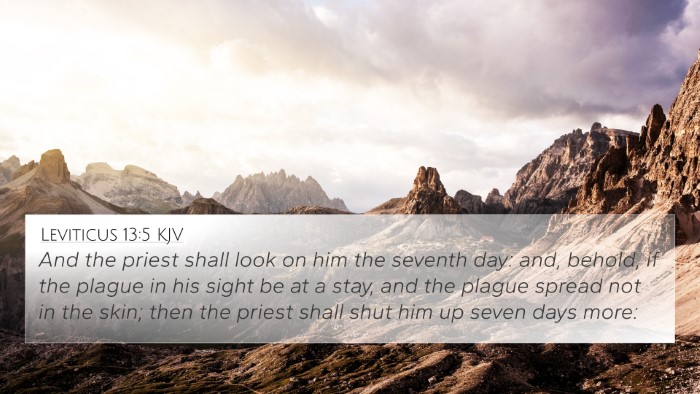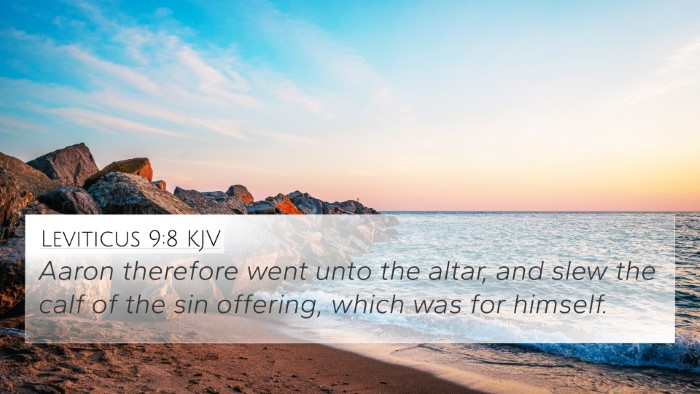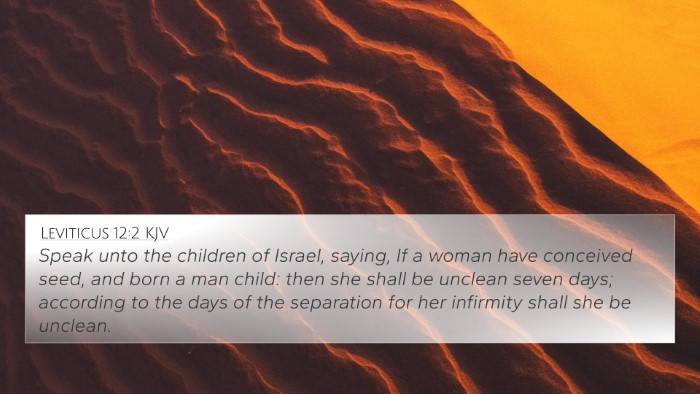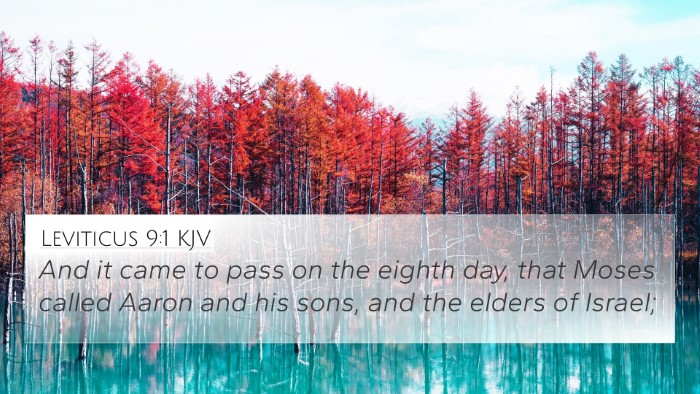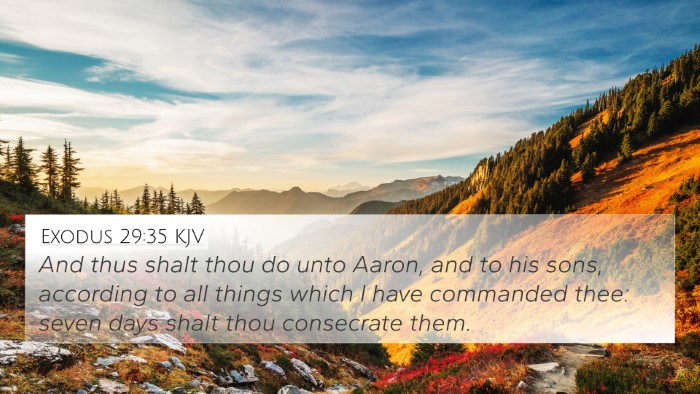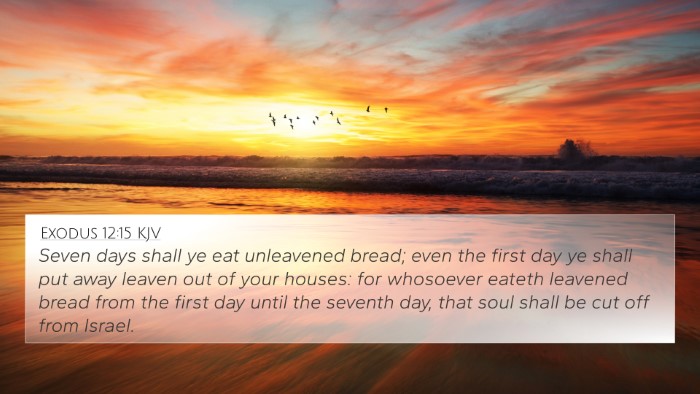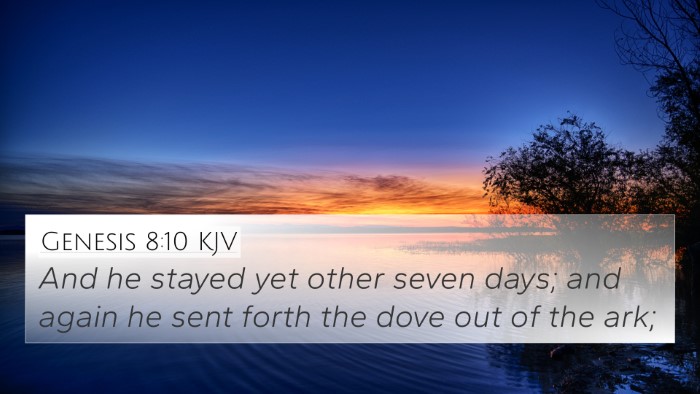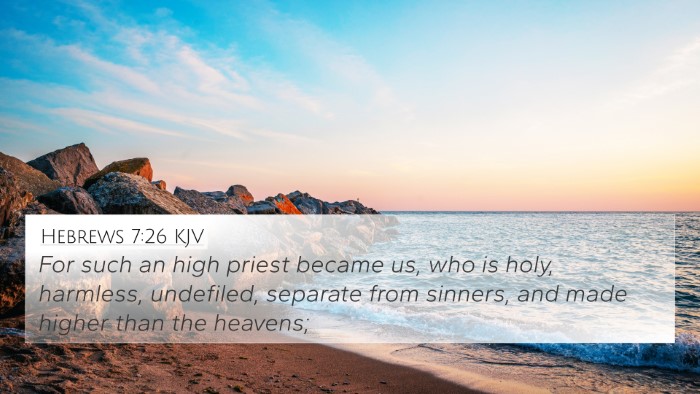Understanding Exodus 29:30
Exodus 29:30: "And the priest that is anointed in his stead shall take his place, and shall put on the holy garments; and he shall minister in the holy place, and shall make an atonement for the people."
Summary of the Verse's Meaning
This verse is part of the instructions given by God to Moses regarding the consecration of the priests, specifically focusing on the anointing and their responsibilities. It emphasizes the importance of the priesthood and their garments in the ministry and how they are to stand in for their predecessor.
Commentary Insights
This text can be interpreted through various commentaries:
-
Matthew Henry: He explains that the wearing of holy garments signifies the holiness required of priests. Their role is not just ceremonial; it represents a divine calling to intercede for the people before God. Henry emphasizes the continuity of the priesthood, as the anointed priest takes the place of his predecessor, highlighting the importance of succession in spiritual authority.
-
Albert Barnes: Barnes elaborates on the significance of the garments as symbolic of the glory and beauty of the priestly office. The garments were not mere clothing but were imbued with spiritual significance, representing the priest's role of mediation between God and Israel. He points out that the priests were to carry out their duties with a sense of reverence and responsibility.
-
Adam Clarke: Clarke reflects on the concept of atonement in this verse, stating that the priest's ministry was pivotal in making atonement for the people. He connects this function to the broader theme of sacrificial atonement throughout the Bible, suggesting that the priest symbolically bears the sins of the people and brings them before God.
Bible Cross-References
Exodus 29:30 connects with several other verses throughout the Bible that highlight themes of priesthood, atonement, and the holiness of God:
- Leviticus 8:13: The ordination of Aaron and his sons clearly illustrates the installation of the priestly office, reflecting themes from Exodus 29.
- Hebrews 5:1: Discusses the role of priests, emphasizing their duty to mediate on behalf of the people.
- 1 Peter 2:9: Presents Christians as a royal priesthood, drawing a parallel to the Old Testament priestly function.
- Numbers 3:3: Lists the sons of Aaron and their responsibilities, underlining the continuity of the priesthood.
- Ephesians 1:3: Relates believers to the spiritual blessings through Christ, likening their status to that of priests.
- Hebrews 7:23-24: Contrasts the Levitical priesthood with the eternal priesthood of Christ, emphasizing His superior role in atonement.
- Romans 12:1: Calls believers to present themselves as living sacrifices, echoing the sacrificial themes found in priestly duties.
- Isaiah 61:6: Describes the people of God as priests, reiterating the notion of a holy vocation.
- Revelation 1:6: Proclaims that Christ has made us a kingdom and priests, tying the Old Testament priestly roles to New Testament believers.
- Exodus 28:2: Addresses the garments of the priests, setting a precedent for the holy attire required in serving God.
Cross-Referencing in Biblical Study
The importance of cross-referencing biblical texts cannot be overstated. It allows for a deeper understanding of the interwoven themes within Scripture. The tools for Bible cross-referencing, such as concordances and specific cross-reference guides, help believers and scholars alike explore the connections. Here are some benefits and tools that facilitate cross-referencing:
- Tools for Bible Cross-Referencing: Bible concordances, which list words and related verses, help locate connections between scriptures.
- Bible Cross-Reference Guide: These guides provide invaluable references to assist in comparative Bible verse analysis.
- Cross-Reference Bible Study: A method that encourages studying scriptures in relation to each other to gain comprehensive insights.
- How to Use Bible Cross-References: Understanding the systematic approach to navigating cross-references enhances scriptural understanding.
- Bible Reference Resources: Various materials exist that compile references for study, including digital apps and printed compilations.
Bible Verse Connections
Through thematic Bible verse connections and parallels, one can identify how various scriptures relate and build a coherent theological framework. Crucial areas for study include:
- Identifying connections between the Old and New Testament, such as the transition from the Levitical priesthood to Christ’s eternal priestly role.
- Detailed cross-references between Gospels, particularly in their portrayals of Jesus as the fulfillment of the priestly functions.
- Exploring Bible verses related to themes like atonement, sacrifice, and intercession, which are key to understanding the broader biblical narrative.
Conclusion
The verse Exodus 29:30 encapsulates vital themes of priesthood, atonement, and holiness within the framework of God's covenant with Israel. Engaging in cross-referencing and studying these connections deepens our understanding of Scripture and the divine narrative. As one explores the rich tapestry of the Bible, they discover that each verse can guide and illuminate their faith journey.
